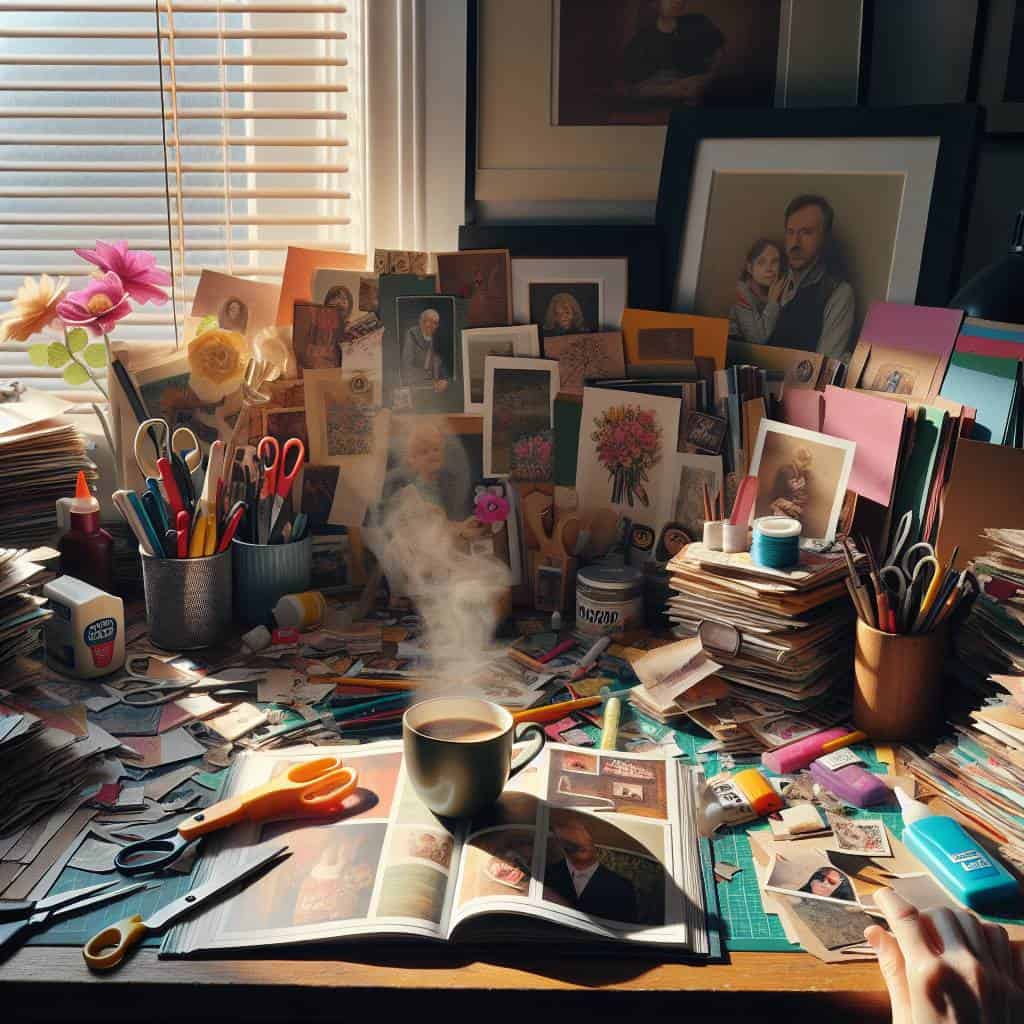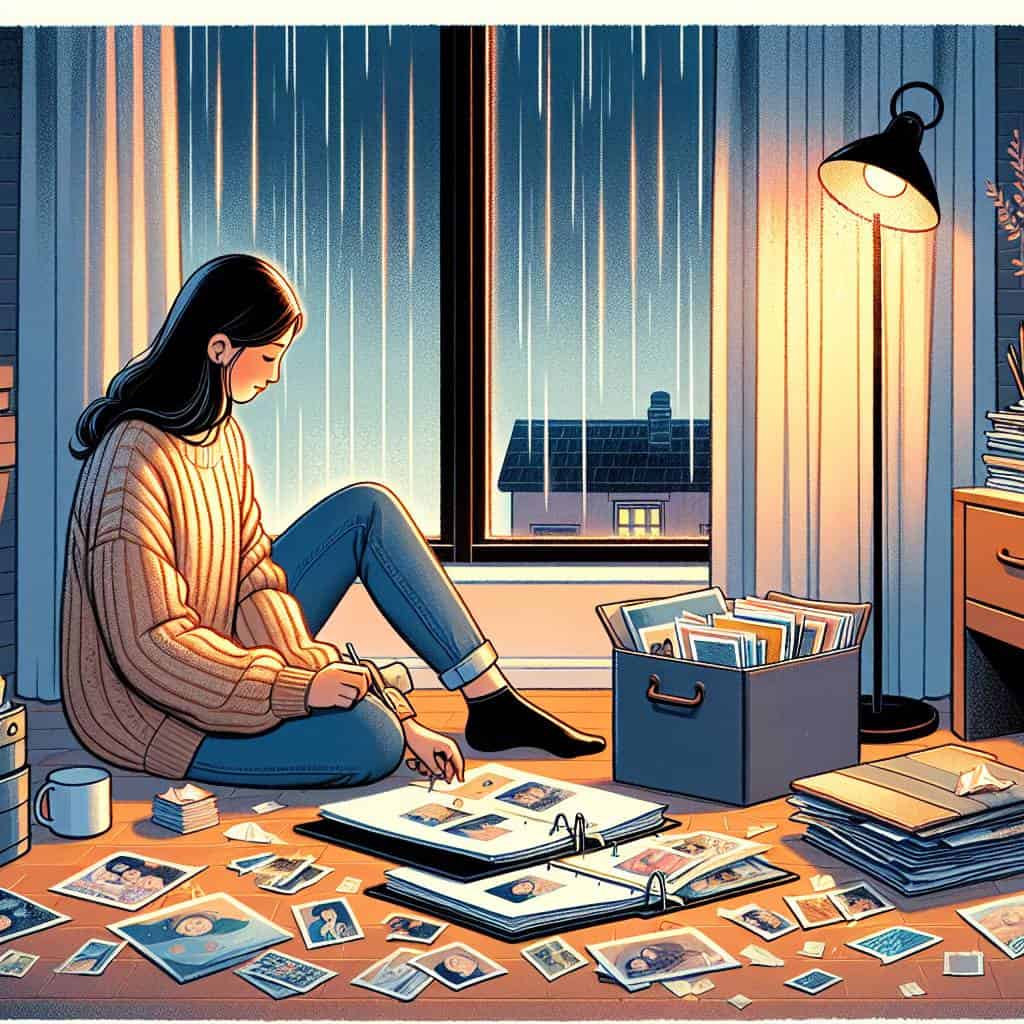I once tried to gift my family a DIY book, thinking it would cement my status as the sentimental genius of the clan. Picture this: a cluttered desk strewn with half-cut photos, a glue stick that’s seen better days, and my frustration peaking as I realized I’d glued Uncle Jim’s head to Aunt Sally’s body. Not quite the heartwarming family heirloom I’d envisioned. It was a mess, but in that chaos, I found a kind of beauty—each mismatched page was a testament to our perfectly imperfect family. And honestly, isn’t that the point? To capture the raw, unpolished memories that make us who we are?

So, you’re thinking of diving into the world of DIY books, huh? Well, buckle up, because I’m handing you the wrench to craft something authentic. We’ll riff on using binders that can withstand sticky toddler fingers, cards that tell stories in a way that no digital slideshow ever could, and photos that capture the essence of family legends. Expect a guide that’s more toolbox than textbook, filled with personal anecdotes and practical tips to create a gift that’s as unique as your family’s quirks. Let’s get those hands dirty and rev up your creativity.
As you dive into the world of creating a DIY book for your family, remember that inspiration can come from the most unexpected places. Just like the thrill of discovering new connections on platforms like Geile Frauen, building a family gift book is about exploring relationships and uncovering stories that add depth and color to those cherished pages. So, while you’re crafting your narrative, don’t shy away from the vibrant tales and cheeky humor that make your family unique—these are the elements that transform a collection of recipes and memories into a living, breathing legacy.
Table of Contents
- The Chronicles of My Battle with the Binder: A Family Saga
- The Art of Picking Cards That Won’t Make You Cringe
- Unveiling the Power of Personal Stories: More Than Just Photos
- Crafting Your Family’s Legacy: The DIY Gift Book
- Crafting Your Family’s Legacy One Page at a Time
- Binding Memories in a DIY Gift
- Turning Memories Into Pages: Your DIY Family Book Questions Answered
- The Final Touch: Crafting Memories in Ink and Paper
The Chronicles of My Battle with the Binder: A Family Saga

In the hallowed halls of family lore, my battle with the binder stands as a testament to both patience and perseverance—akin to wrestling a stubborn carburetor into submission. It all began on a rainy Saturday, the kind of day that makes you nostalgic and a bit reckless. Armed with a motley collection of crumpled photos, handwritten notes, and the occasional, inexplicably sticky card, I decided to assemble a DIY family book. The binder was meant to be the backbone of this ambitious project, a simple tool to unite generations of stories. But like any good story worth telling, it was anything but simple.
The first challenge came in the form of the binder itself, a hulking relic that had seen better days. Its rings creaked with the defiance of a gatekeeper, daring me to fill its pages with the chaos of our lineage. As I wrestled with the three-ringed beast, I found myself sifting through the detritus of our family history. The photos, faded and frayed at the edges, were like fragile time machines. Each one a snapshot of a moment, a memory suspended in amber. And the stories—oh, the stories! Scribbled on the backs of receipts and napkins, they were the heartbeat of our family, full of laughter, love, and the occasional scandal. I knew I had to fit these pieces together like a mechanic reassembling an engine, each memory a gear that needed its rightful place.
But the real battle wasn’t just with the binder—it was with the stories themselves, refusing to be tamed. As I pieced them together, I realized that this wasn’t just a book; it was a living, breathing testament to our shared journey. The binder, once a mere afterthought, became the spine that held us together, a physical manifestation of our family’s resilience. And as I closed its cover with a satisfying click, I knew I had done it. I had turned a chaotic collection of mementos into a narrative that would outlast us all. In that moment, I was no longer just a storyteller. I was the keeper of our family’s soul.
The Art of Picking Cards That Won’t Make You Cringe
Imagine standing in the card aisle, surrounded by the overwhelming scent of cheap paper and ink, trying to find something that doesn’t scream “I forgot and grabbed this last-minute.” Picking a card that won’t make you cringe is an art form, honed through years of dodging those glossy abominations that mistake sentiment for saccharine. It’s about finding that balance—something that captures the essence of your message without drowning it in glitter and generic platitudes. I’ve spent countless afternoons flipping through racks, searching for that elusive piece of cardstock that speaks to my soul and doesn’t look like it was designed by a committee who never met a person named Grandma or Uncle Joe.
But there’s a trick to it, one I learned after far too many awkward moments of watching someone open a card and fake a smile. It’s about knowing the recipient—feeling the weight of their quirks, their humor, and their unspoken stories. It means bypassing the mass-produced drivel and going straight for the jugular of authenticity. I once found a card for my brother that simply said, “You’re not entirely awful”—a sentiment he found hilariously accurate, and way more meaningful than a dozen roses or a cartoon cat. Trust me, when you hand over a card that resonates, you’ll see their eyes light up with genuine appreciation, instead of the glaze of obligatory gratitude.
Unveiling the Power of Personal Stories: More Than Just Photos
When I first cracked open that dusty family binder, it was like popping the hood of an old car. It didn’t take long to realize that it wasn’t just about the photos—those frozen smiles and awkward poses. No, it was the stories scribbled in the margins, the ones that had lived in the spaces between the snapshots, that truly brought the past roaring to life. Each note, each date, was a spark plug igniting a forgotten engine. There was the time Uncle Joe decided to take the boat out and nearly sank it, a tale told in hurried pencil scrawl beside a water-stained picture. Or Aunt Meg’s cryptic hint at a family feud, tucked neatly behind that impossibly perfect Christmas card. These weren’t just stories—they were the bolts and nuts holding the family together, the unseen framework behind every glossy print.
As I dug deeper, it became clear that these personal stories had a power far beyond the pictures. They were the raw, unfiltered oil running through the engine of our family history. Without them, the photos were just metal shells—shiny, sure, but hollow. Imagine listening to an engine’s rumble without understanding the symphony of parts that create it. Unveiling these stories meant more than uncovering the past; it was about feeling the pulse of those who came before me, their lives a series of misfires and revs, all documented in their unpolished glory. It’s a messy, beautiful thing, this legacy of scribbles and snapshots. And as I piece it all together, I’m not just a mechanic of words—I’m a keeper of tales, wrench in hand, ready to tune up the narrative of my own life.
Crafting Your Family’s Legacy: The DIY Gift Book
- Start by choosing a sturdy binder, the kind that could withstand a toddler’s tantrum, because this book’s going to be manhandled for generations.
- Dig out those old family photos—the ones that make you cringe and laugh at the same time—and let them tell the stories words can’t capture.
- Handwrite or type personal stories on cards, weaving in the quirks and tales that turn relatives into legends.
- Include a section for future blank pages, because this family story is still being written; let everyone add their chapter.
- Don’t forget to add those little personal touches—a pressed flower, a doodle, or a secret note—to make it feel like a treasure map of memories.
Crafting Your Family’s Legacy One Page at a Time
Binders Are More Than Office Supplies: Think of them as the spine that holds your family’s stories together. Choose one that can withstand years of page-flipping curiosity.
Recipe Cards Aren’t Just for Ingredients: They’re a canvas for memories. Write down not just the ‘what’, but the ‘why’—the little anecdotes that make each dish more than just food.
Photos: The Visual Glue That Holds Stories Together: Don’t just slap any old picture in there. Capture candid moments that tell the real story—not the one with everyone forced into awkward smiles.
Binding Memories in a DIY Gift
Creating a DIY family book isn’t just about binding pages with glue and thread; it’s about stitching together the past with every photo, every story, and every scribbled recipe card that tells a tale only your family knows.
Turning Memories Into Pages: Your DIY Family Book Questions Answered
How do I choose the right binder for my DIY family book?
Think of the binder as the backbone of your creation. It needs to be sturdy enough to hold the weight of your family’s tales and photos but flexible enough for you to easily add or rearrange pages. Go for something durable. A three-ring binder can be your best bet—it’s like the trusty old pickup truck of binders. Reliable and ready to haul your memories around.
What kind of cards and paper should I use for adding personal stories?
Opt for a mix of textured cardstock and smooth paper to give your book some dimension, like the highs and lows of those family stories. Use index cards for quick anecdotes or recipes, and heavier cardstock for longer tales or those legendary family sagas. Think of it as tuning an engine—every component has its place and purpose.
How can I incorporate photos without making the book too bulky?
Photos are the heart of your book, so treat them with care. Use double-sided tape or photo corners to mount them securely without the bulk. And remember, not every photo needs to make the cut—select the ones that tell the story best. It’s like choosing the right tool from your kit; quality beats quantity every time.
The Final Touch: Crafting Memories in Ink and Paper
As I sit back, binder in hand, I can’t help but feel like I’ve just finished tuning a stubborn engine. Each card, each photo, a cog in this intricate machine of memories. Sure, there were moments when I wanted to chuck the whole project out the window, but isn’t that the way with anything worth doing? A wise mechanic once told me that every story has a heartbeat; you just have to listen closely enough to hear it. And maybe, just maybe, assembling this family gift book was like tuning into the hum of an engine long forgotten.
This journey—piecing together stories and snapshots—felt like a conversation with the past. Each page is a promise that we won’t let these stories fade into the background noise of life. I’ve learned that the magic lies in the imperfections, the grease stains on the pages, the smudged ink from laughter and tears shared over the kitchen table. This isn’t just a book; it’s a testament to the power of shared history, a manual for future generations to riffle through and add their chapters. Here’s to the mess, the noise, and the stories that keep our engines running.